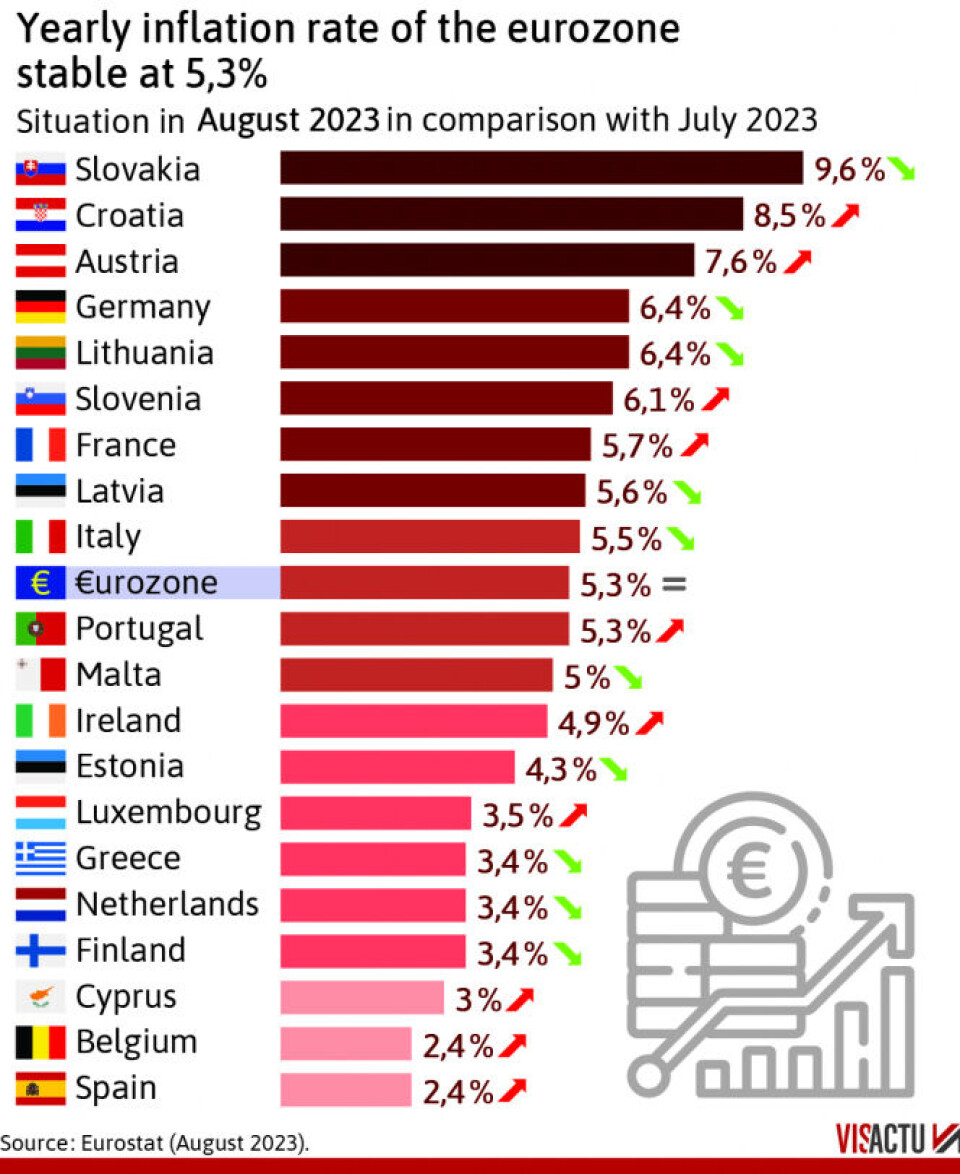-
Pension age reform in France: Most favour return to age 62
A ‘conclave’ of employers' organisations and trade unions is meeting to discuss matter on the the orders of Prime Minister François Bayrou
-
Mystery of jewels found buried under communal wall in Dordogne
The gold rings, pearl brooches and diamond encrusted bracelets were discovered by a local association
-
Try a different way to cross UK-France the Channel - a sailing catamaran ferry
Passengers will be able to help sail the boat once out of the harbour
Chart: See how France’s inflation compares within the Eurozone
We also look at the figures for the UK and US - and how they differ from the same time the year before

France’s yearly inflation remains slightly higher than the Eurozone average, although it is becoming more stable than in previous months, new data shows.
In August 2023, French yearly inflation was 5.7%, compared to the Eurozone average of 5.3%.
Whilst this places it slightly higher than the average, it is still lower than countries such as Germany, Croatia, and Austria.
This is the opposite of results last year when France’s inflation was around 5% lower than the average of 10%.
The chart below shows the yearly inflation in August 2023 for countries which use the euro below.

Inflation switch due to end of protections
The end of the fuel rebate and reduced protection of the energy shield (bouclier tarifaire) – which kept the country’s inflation low last year – is the cause of the rise.Other nations which did not implement such policies have seen inflation largely fall.
In addition, inflation is not spread out evenly amongst different household costs.
Whilst a number of major French supermarkets have set up initiatives to try to limit the impact of inflation – and the government said prices of key staple goods would fall from August – it is still the area where inflation has climbed the most in the country.
Read more: Poultry, oil, cereals: Which items are set to fall in price in France?
The overall price of food products have increased 11.1% in the last 12 months in France, and for energy it has increased by 6.8%, but rises were much lower for general services (2.9%) and in manufacturing (3.1%), according to the state statistical body INSEE.
The Eurostat agency places inflation for food at 13.2% in the last 12 months in France, compared to 12.4% for the rest of Europe.
Outside of the EU, yearly inflation rates for August have not yet been given for most countries, but comparisons to July data can be made.
The US saw year on year inflation of 3.2% in July, lower than any EU country, and more than 2% lower than in France.
On the other hand, in the UK year on year inflation in July was 6.8% – higher than in France, but seeing a significant drop between June 2023 (where it was 7.9%), and dropping more than 3% from March 2023’s figure (10.1%).
The trend of lowered inflation is set to continue, meaning that when August figures are released, the UK’s inflation could be comparable to – and perhaps even lower than – France’s.
Related articles:
France reviews increasing cigarette prices to €12 per pack
Key dates in September to know about in France
























